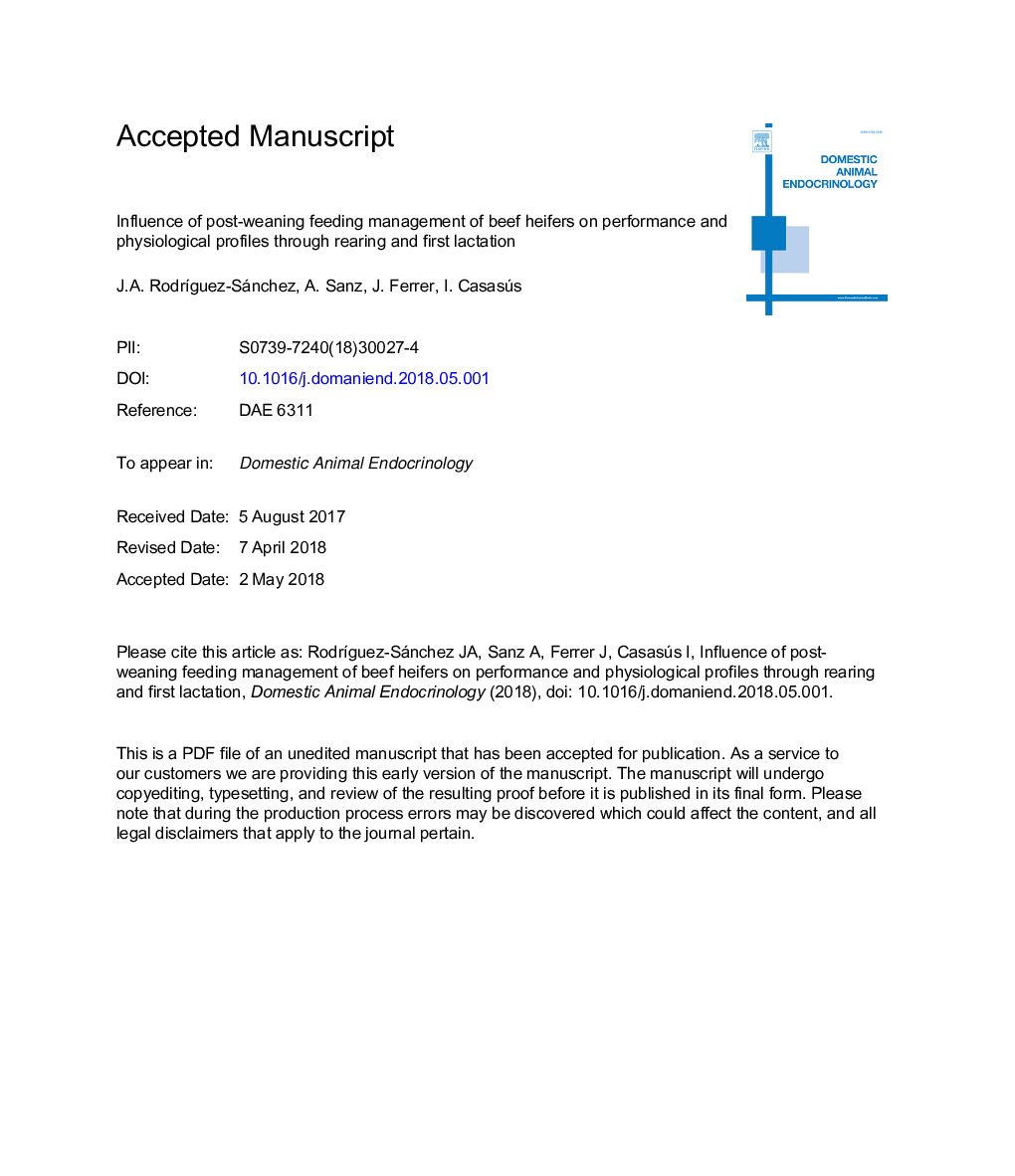| Article ID | Journal | Published Year | Pages | File Type |
|---|---|---|---|---|
| 8481845 | Domestic Animal Endocrinology | 2018 | 47 Pages |
Abstract
The aim of this study was to examine the effects of 2 postweaning feeding management approaches (FEED: 0.8 [HIGH] vs 0.6 [MOD] kg/d target ADG) on the performance of heifers of 2 beef breeds (BREED: Parda de Montaña [PA] vs Pirenaica) calving at 2 yr. Twenty-five heifers previously creep fed before weaning (6 mo) were assigned to 2 planes of nutrition from 6 to 15 mo of age. At 15 mo, they were inseminated, and then received similar diets until weaning of their first calf (4 mo postcalving). Several parameters were measured to analyze growth and development (BW; ADG; size measures at 6 mo, 15 mo, calving, and weaning), performance at puberty and first breeding, and dam and calf performance in the first lactation (calving traits, ADG, milk yield). Metabolic (glucose, cholesterol, NEFA, β-hydroxybutyrate, and urea) and endocrine status (IGF-I and leptin) were assessed in plasma samples collected every 3 mo from 6 mo to calving and monthly during lactation. No interaction between BREED and FEED was observed. Heifers from the HIGH feeding treatment had higher postweaning ADG than those on the LOW diet. At 15 mo, they had greater BW, heart girth, and external pelvic area, but they did not differ thereafter. All heifers reached puberty at similar BW (55% mature BW) but different ages. Heifers from the HIGH treatment tended (P < 0.09) to be pubertal earlier, and PA heifers were 1.6 mo younger than Pirenaica heifers (P < 0.05) at puberty. At the time of conception (452 ± 59 kg) and calving (471 ± 51 kg), BW was above common recommendations in all groups. Calving traits and performance in lactation did not differ between feeding treatments. BREED only influenced birth weight; PA calves being heavier (P < 0.05), which resulted in a larger calf/cow BW ratio, but no effect on calving difficulty or subsequent performance. Metabolic substrates and hormones depended mostly on sampling date, which was related to current energy and protein intake. Glucose (P < 0.001), cholesterol (P < 0.001), and IGF-I (P < 0.05) were greater during the postweaning phase in heifers on the HIGH diet, and persistent physiological effects were observed during lactation. Age at puberty was negatively related with IGF-I (r = â0.43, P < 0.001), but not with leptin concentrations. In conclusion, regardless of breed, a moderate growth rate ensured adequate heifer development and performance until the first lactation, whereas no advantage was gained from enhanced postweaning gains.
Keywords
Related Topics
Life Sciences
Agricultural and Biological Sciences
Animal Science and Zoology
Authors
J.A. RodrÃguez-Sánchez, A. Sanz, J. Ferrer, I. Casasús,
